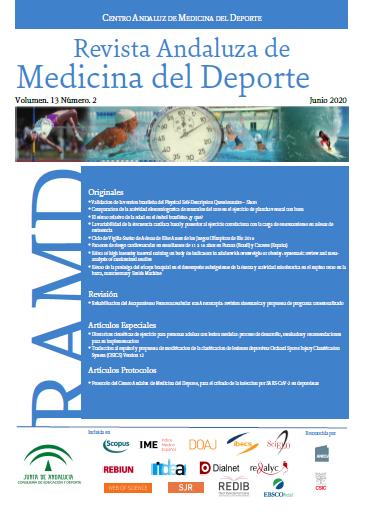Cardiovascular risk factors in students from 11 to 16 years in Paranavaí (Brazil) and Cáceres (Spain)
Abstract
Objective: The objective of this study was to evaluate the association between risk factors for cardiovascular diseases in students from Paranavaí (Brazil) and Cáceres (Spain), from 11 to 16 years old.
Method: Cross-sectional study with 402 students. Analyzed: sex, age, school administrative dependence, height, mass, waist circumference, BMI, waist-height ratio, blood pressure, sedentary behavior, physical activity level, cholesterol, HDL and LDL, triglycerides and fasting glucose. Qui-square, Odds ratio, Spearman and Poisson regression tests were performed, with p-value = 0.05 with a 95% confidence interval.
Results: Spanish students were in the majority from 14 to 16 years old and from public schools, while Brazilians were in the majority from 11 to 13 years old and from private schools. All had a high prevalence of general obesity, with no statistical difference between the groups (G-SPA: 20.2% and 29.6%; G-BRA: 25.0% and 22.9%, for girls and boys). The abdominal obesity presence was higher among Brazilians (G-SPA: 2.4% and 13.6%; G-BRA: 31.1% and 35.2%, respectively for girls and boys). The number of students considered insufficiently active in both groups (G-SPA: 36.9% and 23.5%; G-BRA: 43.2% and 39.0%, for girls and boys) was relevant. Sedentary behavior was observed among Brazilian girls (43.4%) and among boys in both groups (G-ESP: 21.5%; G-BRA: 51.0%). A high index of students with inadequate triglycerides levels (G-SPA: 15.5% and 16.0%; G-BRA: 29.5% and 19.0%, for girls and boys) and HDL (G- SPA: 7.1% and 6.2%; G-BRA: 5.3% and 15.2%, for girls and boys). After crude and adjusted analysis, Brazilian girls and boys aged 11 to 13 years (PR = 2.091; 95% CI: 1.132-3.862) were more likely to experience hypertriglyceridemia.
Conclusions: The present investigation makes noticeable the need to intervene in the most vulnerable groups, considering the presence of modifiable risk factors, in different contexts, suggests that programs aimed at preventing cardiovascular diseases and obesity should start early, for example, with regular physical activity and healthy diet.


